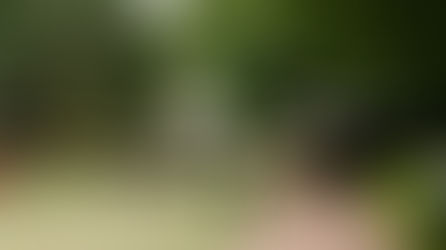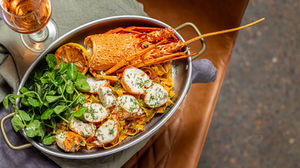GENERATIONS MAKING THEIR MARK Tyrrells Wines
- Your Hunter Valley Magazine
- Jul 3, 2018
- 6 min read

As the fourth generation of one of Australia’s first wine families, Bruce Tyrrell understands the weight of his heritage. But that doesn’t mean continuing a wine making tradition that stretches back 160 years has been a burden on his shoulders.
Despite the importance of the Tyrrell’s legacy in Australia, Bruce said he never felt a sense of expectation around joining the family business.
“I was never pushed into it, and then my wife and I have done the same thing with our children,” Bruce said.“We've never pushed them into it. We always hoped they would,but I’ve never pushed them in.”
Bruce has spent the past 43 years of his working life at Tyrrell’s, joining the business at the age of 23 after becoming the first person in the wine making family to complete a university degree (he studied Agricultural Economics at the University of New England).
Clearly, the no-pressure approach has worked for the fifth generation as well, with Bruce and Pauline’s three children, Jane, John and Chris, having worked across various aspects of the wine making business for more than 15 years each so far.
Tyrrell’s Wines is celebrating its 160th year in 2018 – a milestone that is remarkable for any business, let alone a family business.The anniversary coincides with the 47th vintage of Vat 47 Hunter Chardonnay, as well as the 150th vintage of the Old Patch vineyard, home to the oldest producing vines in NSW.
Bruce said every successive generation had made its own mark on the business, which was originally started by his great-grand father Edward Tyrrell, an English immigrant who purchased 320 acres of prime Hunter Valley land at the foot of the Broken back Range in 1858.
“Each generation brings its own stamp to the table,” Bruce said.“My great-grandfather started this place. He came to Australia from a reasonably privileged life in London; his father was an eye surgeon,they had servants, they had all of that. And then all of a sudden he’s basically "dumped" in the middle of the bush in New South Wales.“
The physical work that he had to do to clear the land and get things going and build a house and all of that, he couldn't ring up and get it home delivered. He had to do it all himself and that must have been a huge change in lifestyle for him.
“He got it started and my grandfather (Avery Tyrrell), who died early,he got gassed and shot on the Somme (during World War One), and so he only lived into his early or mid-60s, but his great contribution was that he was a wonderful viticulturist."
"These great old vineyards that we have today are really as a result of my grandfather. His older brother, Uncle Dan, ran the place, he was the winemaker. He was probably recognised as having the best sherry palate in the country in his heyday, which was a lot of the industry - not a lot of table wine drunk in the 30s and 40s - so Uncle Dan really guided it through the Depression.
“My father (Murray Tyrrell) is remembered for introducing the Chardonnay and Pinot Noir of modern times to Australia. But probably,and more importantly, he really is the father of wine tourism. He started the work to bring people here to the Hunter in the very early 60s and then in the early 70s, which became the thing to do, to go to the vineyards on the weekend.
Take your picnic, sit on the lawn, drink too much and somehow drive back to the city.
For me, (my contribution has) probably been the development of the Semillon variety. It has always been here, has been something we make that no one else in the world makes, but getting that up to the position that itdeserved to be on a world basis (is my contribution).”
While it has been produced by Tyrrell’s since 1963, the esteem in which Tyrrell’s most famous white wine is held centres around Bruce’s decision in 1989 to put away the first quantity of their iconic Vat 1 Semillon, despite being advised not to age it in the bottle.
Seven years later it was released to the public, and the result was incredible, starting the tradition of Tyrrell’s best Hunter Semillon coming to the market with bottle age, with an unsurpassed record in the wine shows.
“We were in China a couple of weeks ago,and people were coming up to us saying, ‘We're here to try Vat wine, that wine’s the best in all the world, it's the best Semillon in all the world’, and it was a real thrill to hear that. I didn't necessarily expect it, but it was a wonderful thrill,” Bruce said.
“Producing it's actually not that difficult, but it's the ability to develop and improve in the bottle, and to live, to live for 40 years.“At the end of the day, a great wine is not something that looks terrific, like a New Zealand Sauvignon Blanc, it looks great for a couple of years, and then it dies off.
That's a nice commercial wine. They've got to be able to open them at 15-years-old and go, ‘Bugger, I wish we'd kept that another five years.’ That's what great wine is all about.”Bruce’s children are also making their mark on Tyrrell’s, with Jane looking after the key “On Premise” sales accounts across NSW and John working in the winery in a role dubbed by Bruce as “Minister for Morale”.
Chris joined the company full time in 2001 at the age of 18, taking part in the first vintage following the death of his grandfather and Australian wine making legend Murray Tyrrell a few months earlier. In between vintages he worked in sales and marketing before returning to the winery permanently at the end of 2005.
Since then he has been an assistant winemaker working with two of the great modern day Hunter Valley winemakers, Andrew Spinaze and Mark Richardson. Named a “Rising Star” of the Hunter wine industry in 2012 and becoming a scholar at the Len Evans Tutorial later that year, Chris has spent the last few years helping Tyrrell’s improve, and in some cases reinvent, their classic regional styles and single vineyard sites, including the flagship Semillon and Shiraz wines from some of the world’s oldest vineyards.
With the sixth generation of Tyrrells also in bud, Bruce claims his motivation these days is driven by his growing clan of grand kids and the legacy he can leave behind for them.
“I suppose it's what I do (that makes me passionate). If I stopped coming here, my wife would probably shoot me two months later. It’s what gets you up in the morning,” Bruce said.“But the great thing for me at the moment is I’ve got a two-and-abit-year-old grandson, and I'm due to get another one at the end of next month.“I think that’s what gets me out of bed in the morning now - to make sure that there's something here for them.“Again, I'm sure Chris and Tegan are not going to march them into the wine industry.“I’ve seen too many people who’ve worked their life for a family business because they were supposed to, and they hated every minute of it, and they had a miserable life. So I don't want any of my children or grand children to have to do that. That decision will be theirs when the time comes.“But you know, you’re not going to put any obstacles in the road if they do make that decision.“
The Tyrrells have been through many phases of change over the last 160 years, adapting to changes in the industry and the economy and the family members of the time.“The consistent factor throughout time has been our love of the Hunter Valley and the wines that it makes. It runs through the veins of the family.
“We have been amongst the very few people lucky enough to work with something that is truly unique in the world of wine, Hunter Semillon, and have become close to the perfection of its style.
In another 160 years, my wish is that the family is still here on our original land making wines that are of great quality and distinctive to the Hunter Valley."
A focus on producing some of the best wines in the world is certainly the way forward for Tyrrell’s according to Bruce, who would much rather the business chase quality rather than quantity.
“We were three or four times bigger 20 years ago (in terms of production) than we are today,” Bruce said.“But then our commercial success took away our ability to be recognised as one of the world’s great winemakers.“That's where we’re headed back to now, we’ve sold the Long Fla tbrand, got out of two or three other brands, and our average price in the last 15 years has doubled.
“We have finally gone through that transition, but we’ve probably still got another two to three years to go to get to where we want to be.“There’s still some more work to do, but being known as one of the world’s great winemakers is where we want to be.
”To mark the 160th anniversary and demonstrate how the best of the Hunter Valley has the ability to age gracefully, Tyrrell’s have released two commemorative museum wines: 2005 Vat 1 Hunter Semillon, the most awarded wine in Tyrrell’s history, and 2007 Vat 9 Hunter Shiraz. ■













































































































